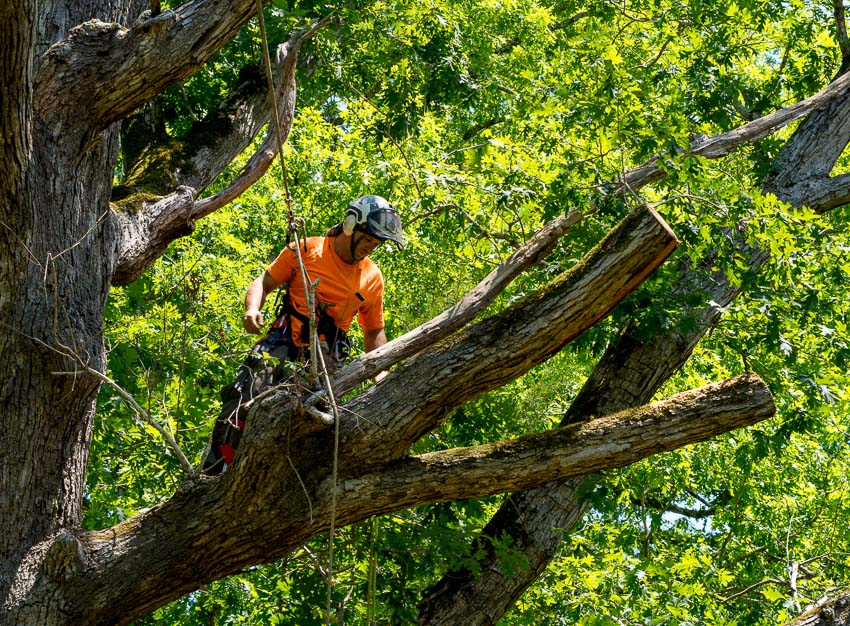The average cost of tree trimming is $500, or between $200 and $900 per tree. Explore tree trimming costs and the factors that influence them with this comprehensive pricing guide to tree trimming costs.
Factors in Calculating Tree Trimming Costs
On average, people pay professional tree trimmers $50 to $125 per hour, but several factors affect the actual cost. Discover the factors influencing tree trimming costs to help you calculate the price.
Location of the Tree
One of the most significant factors affecting tree trimming costs is the tree’s location.
Accessibility and proximity to hazards
Trimming trees near buildings and obstacles like power lines is dangerous. Tree trimmers are expert laborers who know how to work around hazards.
There are several variables that affect their cost, including the need for special equipment to complete the job. If required, a bucket lift will increase the cost dramatically.
However, when the tree is near a power line, your utility company may remove it at no charge. After all, it will help prevent downed wires during storms, which saves them money in the long run.
Urban vs. rural rates
Many landscaping professionals charge higher rates in urban areas. There are a few reasons for this.
- Labor rates and the cost of living are generally higher in urban areas.
- City ordinances may require professionals with certifications and licenses.
- There are typically more laborers available in rural areas.
Labor and Equipment Needed
The type of labor and equipment that is required for tree trimming is another cost factor.
Specialist equipment requirements
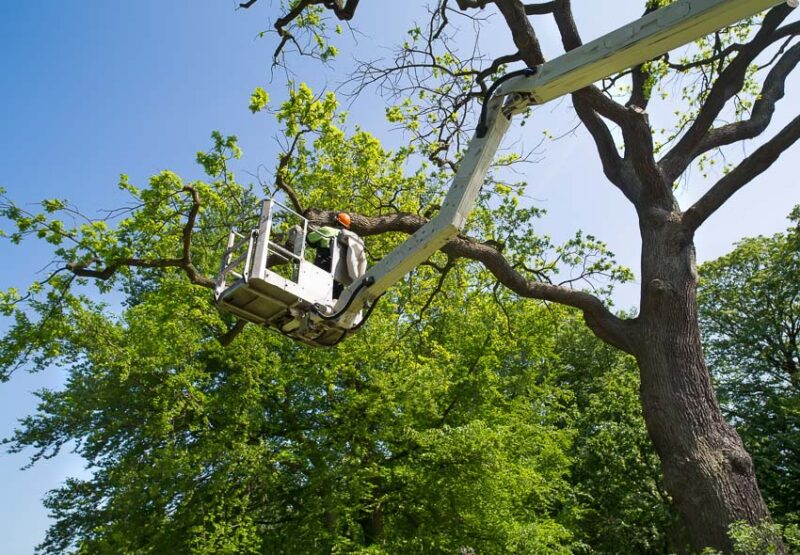
Sometimes, you only need a pair of loppers and a pruning saw. More complicated jobs demand special tools like aerial lifts, chainsaws, chippers, climbing gear, and cranes, depending on the accessibility of the tree and how level the terrain is. Skilled tree climbers can charge higher rates than other arborists.
If you’re DIYing tree trimming, you could pay $250 per day and up to $1,650 per week to rent a bucket lift.
Manpower hours
The number of manpower hours required for tree trimming depends on several factors, including the tree size, how easy it is to get to, and the disposal of the trimmed limbs. Some tree trimming jobs require a crew of at least two people working together for safety reasons.
Health of the Tree
Damaged or unhealthy trees present safety hazards, so they often require special knowledge, skills, and equipment to trim correctly, which adds to the cost of trimming trees.
Infestations or diseases
Typically, you have to completely remove trees with diseases and insect infestations.
If you want to go the extra mile and try to save it, you may need to consult an arborist. Hiring a trained specialist usually costs more than hiring other types of tree trimmers.
Risk of falling branches
The inherent dangers in trimming unhealthy trees increase the cost of trimming them. Damaged trees pose risks to the workers and may require chains or cables to support the limbs while trimming.
Additional Costs and Considerations
Uncover additional costs and factors to consider when calculating the cost of tree trimming.
Emergency Tree Trimming
When you schedule a tree trimming, you pay the typical going rate, but when you require an emergency tree trimming due to a storm, you often have to pay much higher rates.
Permits and Licenses
Do you need a permit to trim a tree? That depends on your location and where the tree stands.
Tree trimming professionals can assist you with getting a permit and can inform you about when they are required. Otherwise, contact your local city or county planning office for assistance.
When and why you need them
Some municipalities consider trees community property, meaning you need a permit before trimming them. Additionally, certain species and types of trees are protected, including heritage trees. You may also have to get a permit for trees over a certain diameter.
Costs associated
The cost of a permit varies. Usually, it’s a nominal fee, ranging from $20 to $150.
Cleanup and Debris Removal
The cost of cleanup and debris removal varies depending on your location. In rural areas, debris removal may be minimal, and you can often DIY it, but in urban areas, you must pay for wood chipping and hauling costs.
Chipping costs
Wood chipping costs $250 to $350, but this depends on how many limbs you have to trim. Usually, wood chipping costs about $70 to $125 per hour.
Hauling away logs
It will cost extra if you need to have logs hauled away. Often, branches trimmed from large oak and maple trees are too large for wood chippers.
One option is to offer free wood to local woodworkers in exchange for removal. Post a sign or place an ad on Facebook Marketplace to see if anyone will remove the wood for free.
Tree Trimming Costs by Tree Type and Size
Discover the costs of tree trimming by tree type and size. Large trees cost much more to trim than small trees because they have large, heavy limbs and often require special equipment.
Also, the larger the tree, the higher the debris removal costs will be.
Small Trees (Under 30 feet)
Trimming small trees under 30 feet tall costs an average of $85 to $400.
Medium Trees (30–60 feet)
Trimming medium trees 30 to 60 feet tall costs an average of $150 to $800 per tree.
Large Trees (Over 60 feet)
Trimming large trees over 60 feet tall costs an average of $300 to $1,700 per tree.
Specific Tree Types
The tree type affects the trimming cost, as some trees are easier to trim and have less debris. Small trees like crepe myrtle are easy to trim, while large towering oak and pine trees can cost as much as $1,700 per tree.
Palm trees
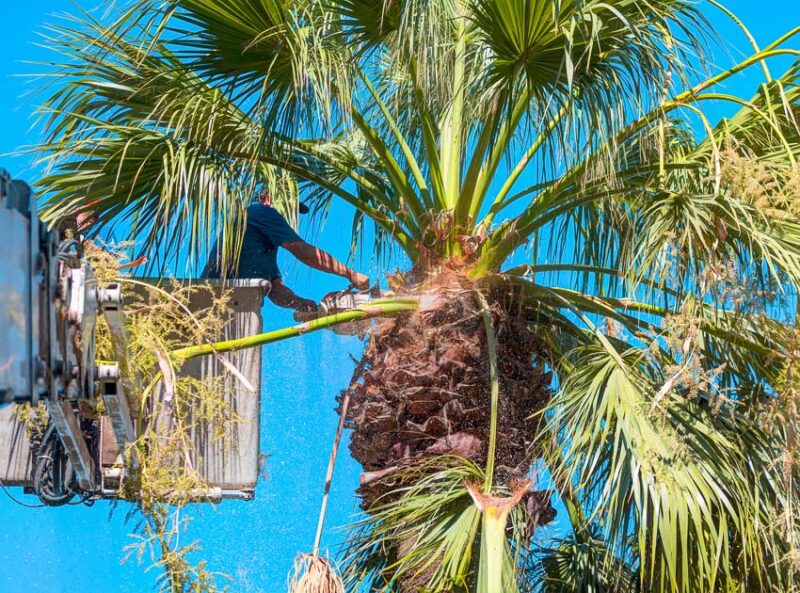
Palm tree trimming costs an average of $100 to $600 per tree. They require more frequent pruning than other types of trees–typically twice a year.
Oak trees
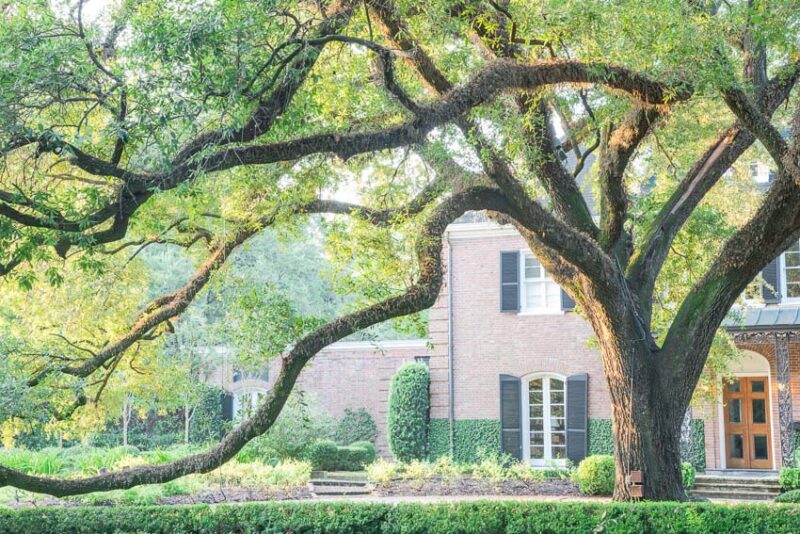
Oak trees are large species with thick limbs, costing about $500 to $1,400 per tree to trim.
Pine trees
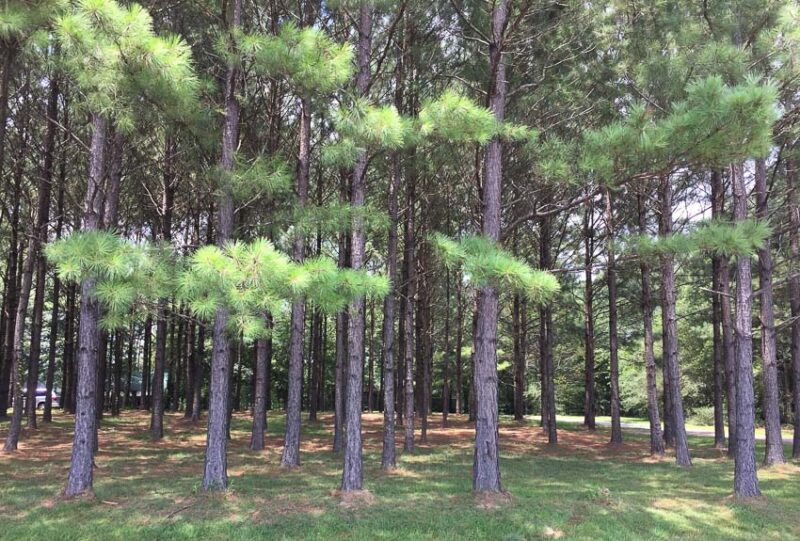
Pine trees can get up to 200 feet tall, and in the worst-case scenario, you could require a small crane to trim a pine tree. The cost of trimming pine trees varies depending on several factors, ranging from $250 to $1,700 per tree.
Maple trees
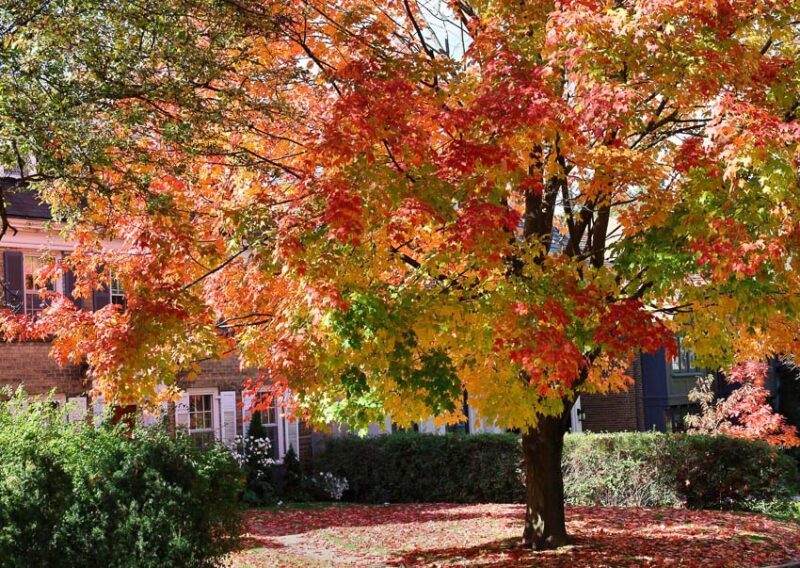
Trimming maple trees costs $475 to $1,100 per tree. Since they are one of the few trees that can be pruned during the middle of the summer, you may be able to save money by scheduling tree trimming during that time.
When Do I Need Tree Trimming?
Understanding when it’s time to trim your trees can help you avoid excessive costs related to damage and emergency tree trimming.
Signs of Disease or Infestation
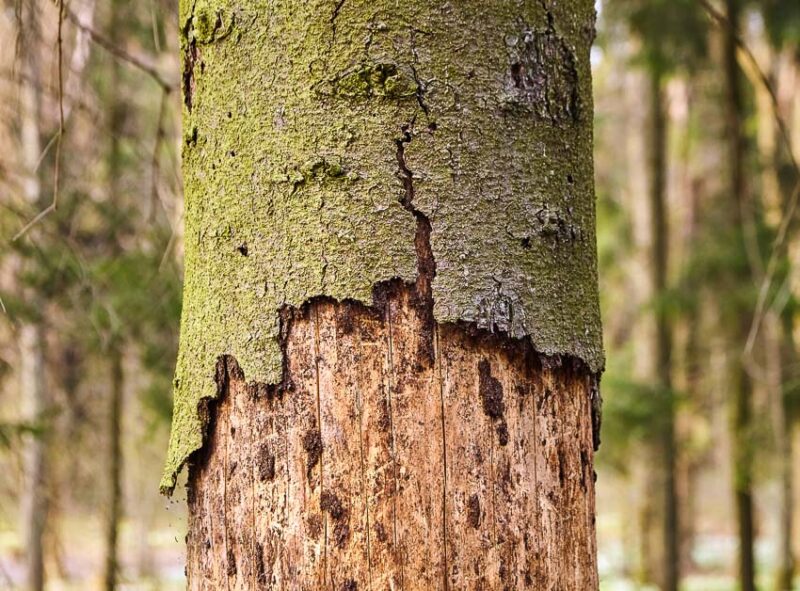
Frequent inspection of the trees in your yard will help you identify signs of disease and infestation. Here’s what to look for:
- Discolored leaves and branches
- Wilting foliage
- Fungal growth
- Cankers and burls
- Holes in the bark
- Sunken bark
- Oozing liquid on the trunk of the tree
- Broken, damaged, or drooping branches
Safety Concerns
Learning to recognize the following safety concerns will also help you determine when it’s time to trim your trees.
Proximity to power lines
Tree branches growing in and around power lines present safety hazards. Branches should be trimmed before they grow near power lines because it’s a task that experts must handle once the branches grow around them.
Contact your power company for assistance if your tree’s branches are growing near power lines.
Overhanging branches
Branches that hang over buildings, landscaping structures, and parking areas can cause damage when they fall. When this occurs, the damages often far exceed the cost of trimming the trees.
Aesthetic Reasons
Another sign that your trees need to be trimmed is that they look shabby and unkempt. Regularly trimming your trees enhances your property’s curb appeal, so it’s often done for aesthetic reasons.
DIY Tree Trimming Costs vs. Hiring a Professional
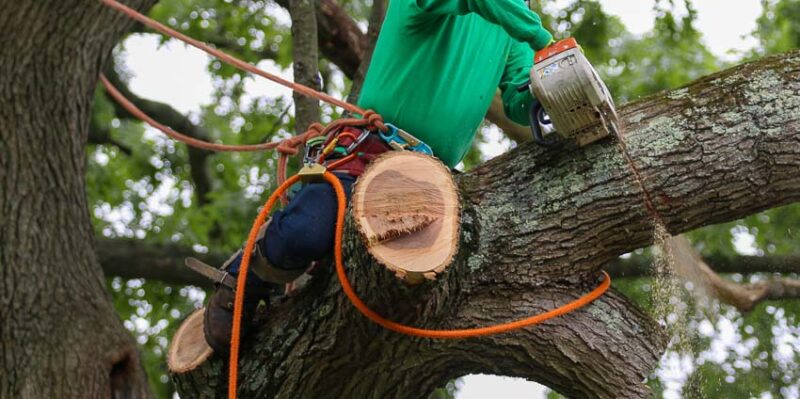
Uncover the differences between DIY tree trimming costs and hiring a professional, including the advantages and disadvantages of each.
Equipment Rental and Purchase for DIY
When calculating the cost of DIY tree trimming versus hiring a professional tree trimmer, you must factor in the costs of equipment rentals. You may have to rent equipment like aerial lifts, chainsaws, and pruning saws, and it could cost you more than hiring someone to do the work.
Safety Considerations
There are risks associated with DIY tree trimming, and safety considerations should play a significant role in your decision-making process.
Insurance Implications
Another consideration is insurance. Not all insurance policies cover DIY projects, and the costs may not be covered if your property is damaged during DIY tree trimming.
Benefits of Hiring a Professional
Learn more about the benefits of hiring a professional tree trimmer.
Experience and expertise
Professional tree trimmers have experience and can do the job quickly and efficiently. Their expertise also helps them find solutions to problems you wouldn’t think of if you were DIYing the project.
Comprehensive services
Professionals have comprehensive services and will handle all the tasks related to trimming your trees so that you don’t have the hassle of dealing with cleanup and disposal.
It’s important to factor in all the associated costs of tree trimming when comparing DIY versus professional services. Keep in mind that professionals can also provide an assessment that helps you make long-term decisions about the trees in your yard.
How to Save Money on Tree Trimming Costs
Tree trimming costs can be much more expensive than many people realize. If your budget is tight, use these money-saving tips:
Bundle services with neighbors–Tree trimmers sometimes offer group rates, and if you and your neighbors can get on the same tree-trimming schedule, you can save money.
Off-season trimming–Spring and fall are usually the busiest times for landscaping professionals, including arborists and tree trimmers. It’s worth asking if they have lower rates in the off-season, and they may appreciate the opportunity to have off-season work.
Regular maintenance vs. reactive trimming–When branches break, they can damage buildings, vehicles, and power lines and be more challenging to remove. You can save money by regularly trimming your trees as preventive maintenance.
Get multiple quotes–It’s helpful to get at least three quotes from different tree-trimming companies to compare prices and services.
FAQs about Tree Trimming Costs
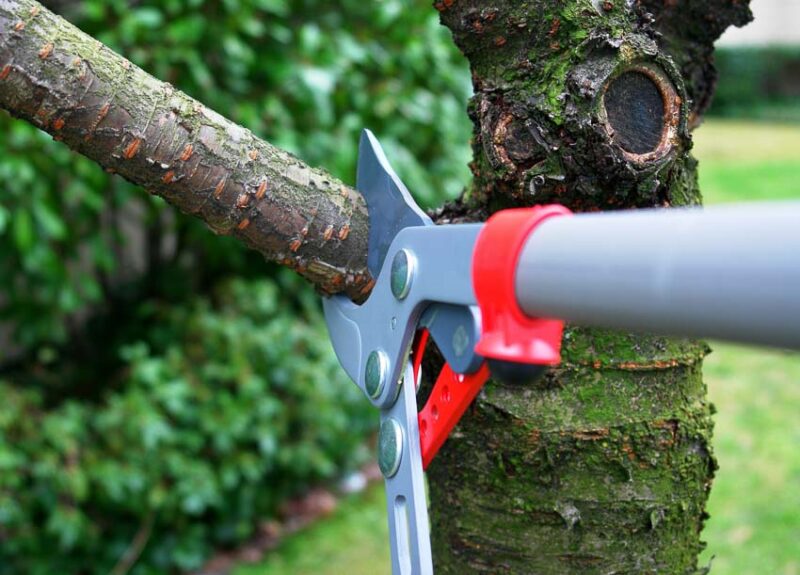
How often should I trim my trees?
Large, mature trees should be trimmed every three to five years. Smaller trees should be trimmed more frequently, usually every two to three years.
Can I negotiate tree trimming costs with professionals?
You can obtain multiple quotes from various tree trimming companies to use as a bargaining tool, but many professionals have set rates so that they can stay profitable and maintain their business. However, asking them how you can lower your costs usually doesn’t hurt.
What’s the difference between tree trimming and tree removal costs?
Tree removal usually costs more than tree trimming. There are many reasons to keep trees in your yard, as they provide numerous benefits, such as lower heating costs and keeping your yard cool in the summer.
Does insurance cover tree trimming costs?
Home insurance doesn’t usually cover the cost of tree trimming, as it’s considered a maintenance expense. However, in the event of damage caused by a covered peril, like a storm, most insurance companies cover the cost of tree trimming and removal.
Are there any grants or assistance programs to help with the costs?
The 2014 Farm Bill may assist seniors under the Tree Assistance Program (TAP) with tree trimming and removal costs. The Castle Foundation is another program that assists seniors with removing hazardous trees.

